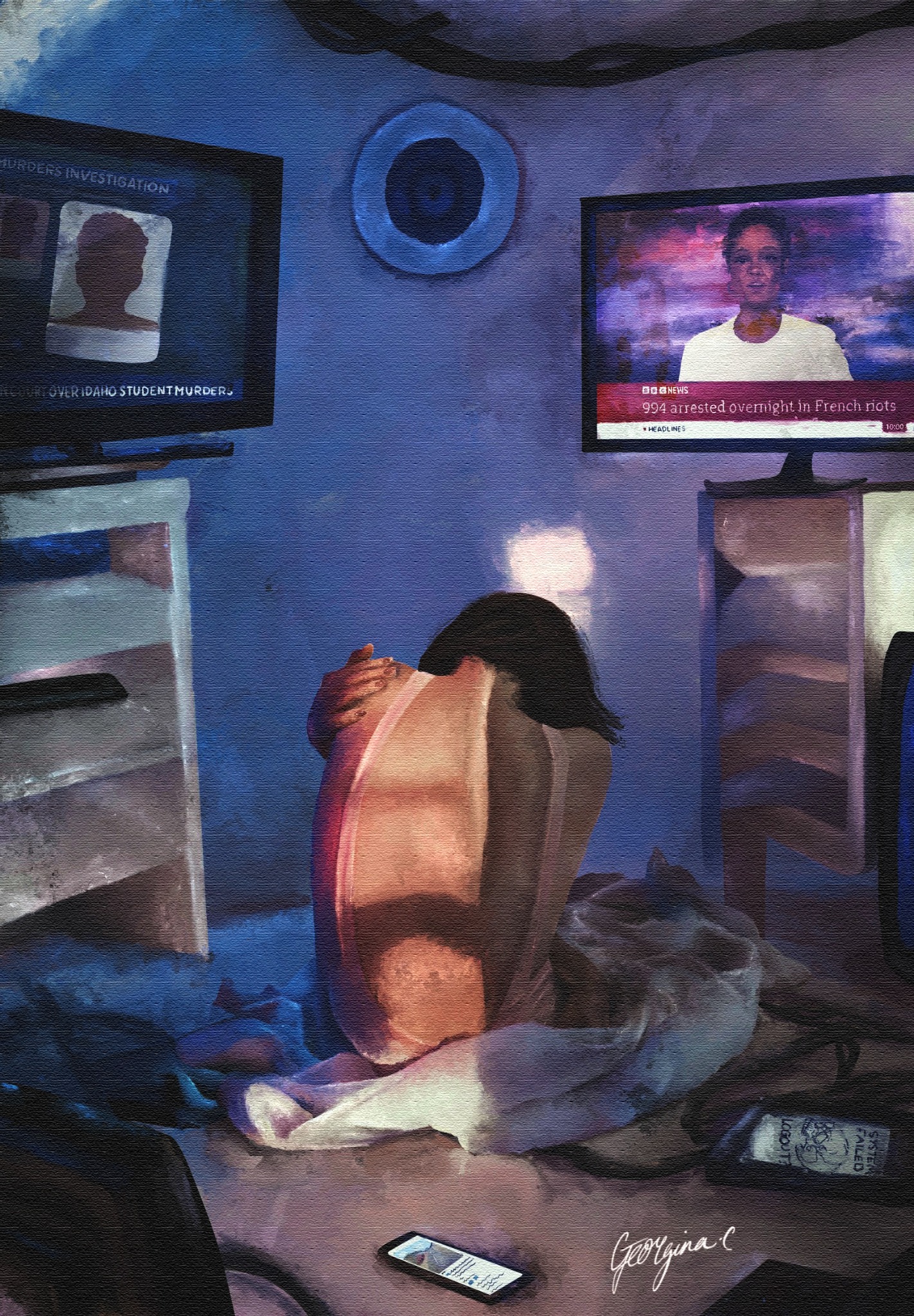
Desensitisation (2023)
Desensitisation (2023) examines the quiet collapse of empathy in an age of constant exposure. Blending Baroque chiaroscuro with contemporary realism, Georgina M. Cox depicts a figure overwhelmed by media light — a portrait of numbness within the noise. The work reflects on emotional fatigue, modern voyeurism, and the fragile boundary between awareness and apathy.
⤷ When I started working on Desensitisation, I was thinking about how constant exposure to violence and tragedy through our screens changes the way we feel — or stops us from feeling altogether. It’s strange how, in the modern world, we can be surrounded by suffering and yet experience it as background noise. The piece became my way of trying to capture that emotional numbness and heavy kind of horror that comes from being overwhelmed by information.
The figure sits on the floor, curled in on herself, surrounded by televisions and phones that keep broadcasting chaos. The room glows with that cold digital light, which I painted almost like moonlight — detached, sterile, but inescapable. I wanted it to feel like she’s trapped inside the noise, but also complicit in it. She isn’t watching anymore, but she can’t turn it off either. That tension felt very human to me.
Visually, the composition draws on Baroque contrasts: darkness against illumination, stillness against movement. The light from the screens replaces the candlelight of old religious paintings. It’s a deliberate inversion of the traditional sacred interior. Where there once was divinity, there’s now media. The chiaroscuro here doesn’t dramatise salvation; it dramatises fatigue.
Thematically, Desensitisation continues my ongoing exploration of empathy, alienation, and the psychology of observation. It asks what happens to our sense of compassion when tragedy becomes constant — when we scroll past pain rather than witness it. I think the most unsettling part isn’t that she’s horrified, but that she’s exhausted. There’s no spectacle in her reaction, nor any cinematic sadness.
The painting is also a reflection on how feminine figures are often portrayed as emotional anchors in art — embodiments of sensitivity and feeling. Here, she resists that role. She turns inward, not outward. The light no longer reflects revelation, but desensitisation itself — a sterile illumination that exposes everything and heals nothing.
Ultimately, Desensitisation is about what it means to feel too much and too little at the same time. It’s a portrait of overstimulation and having the ache of being human in a world that never stops showing us what hurts.
0 Comments Add a Comment?